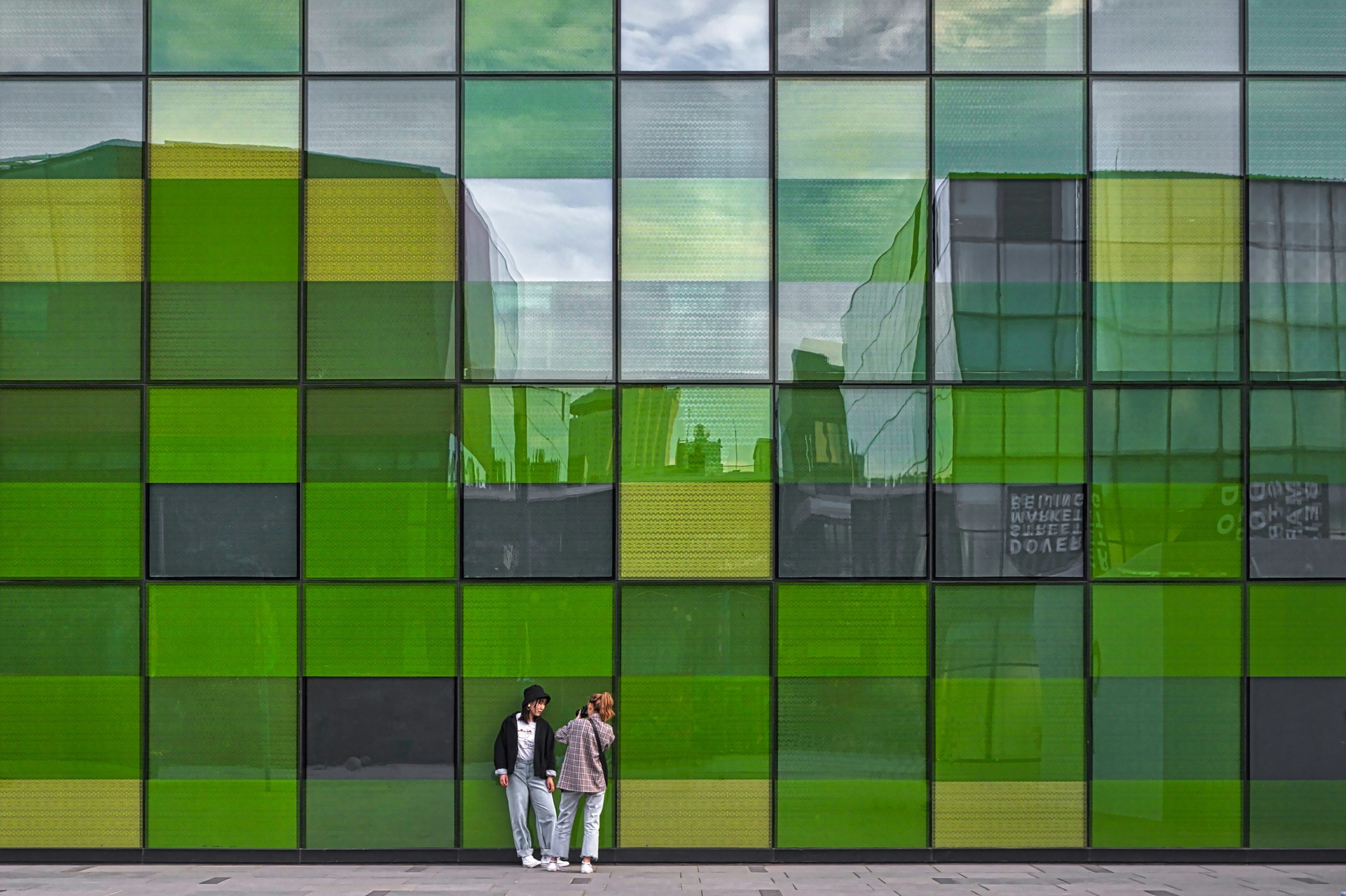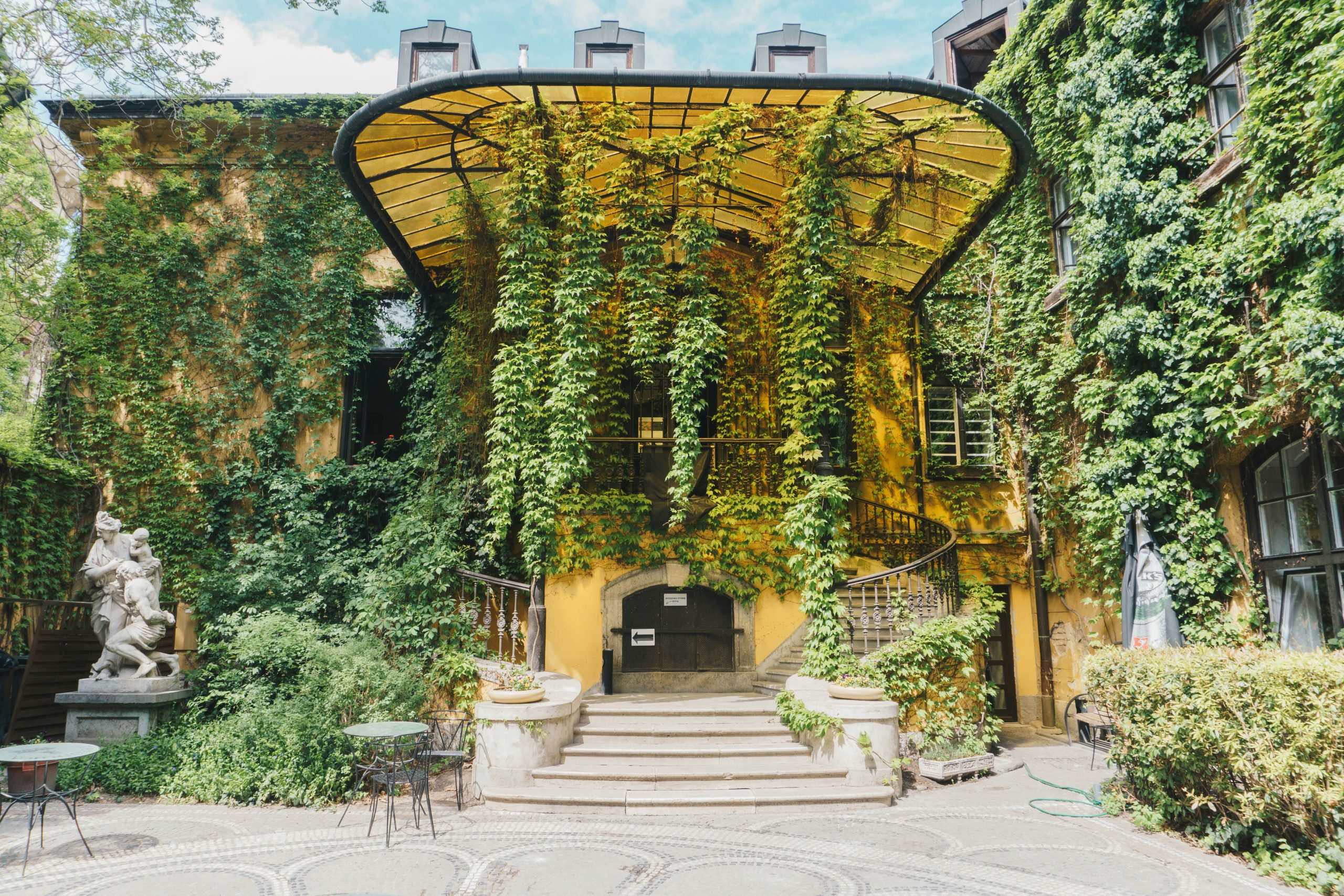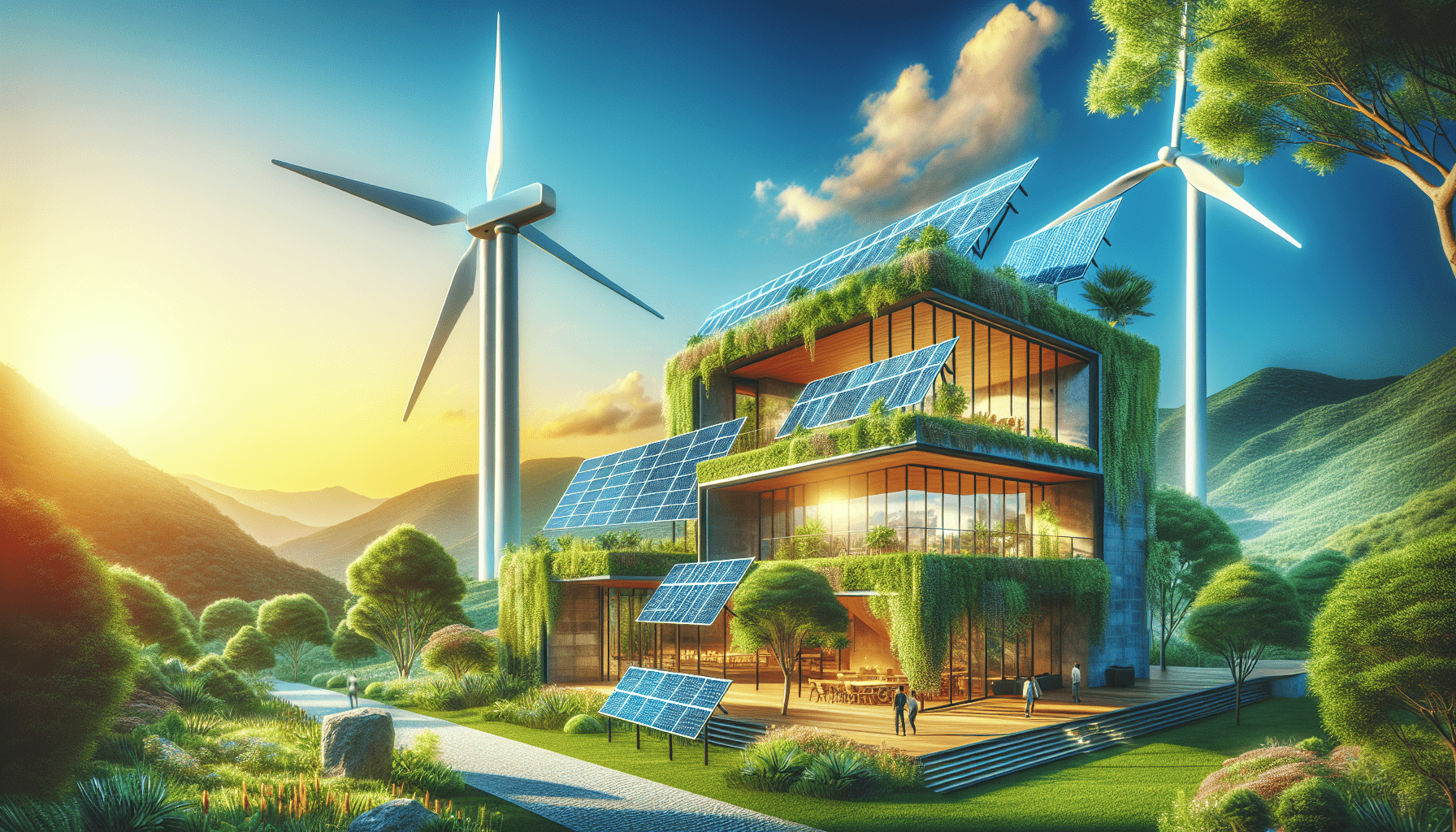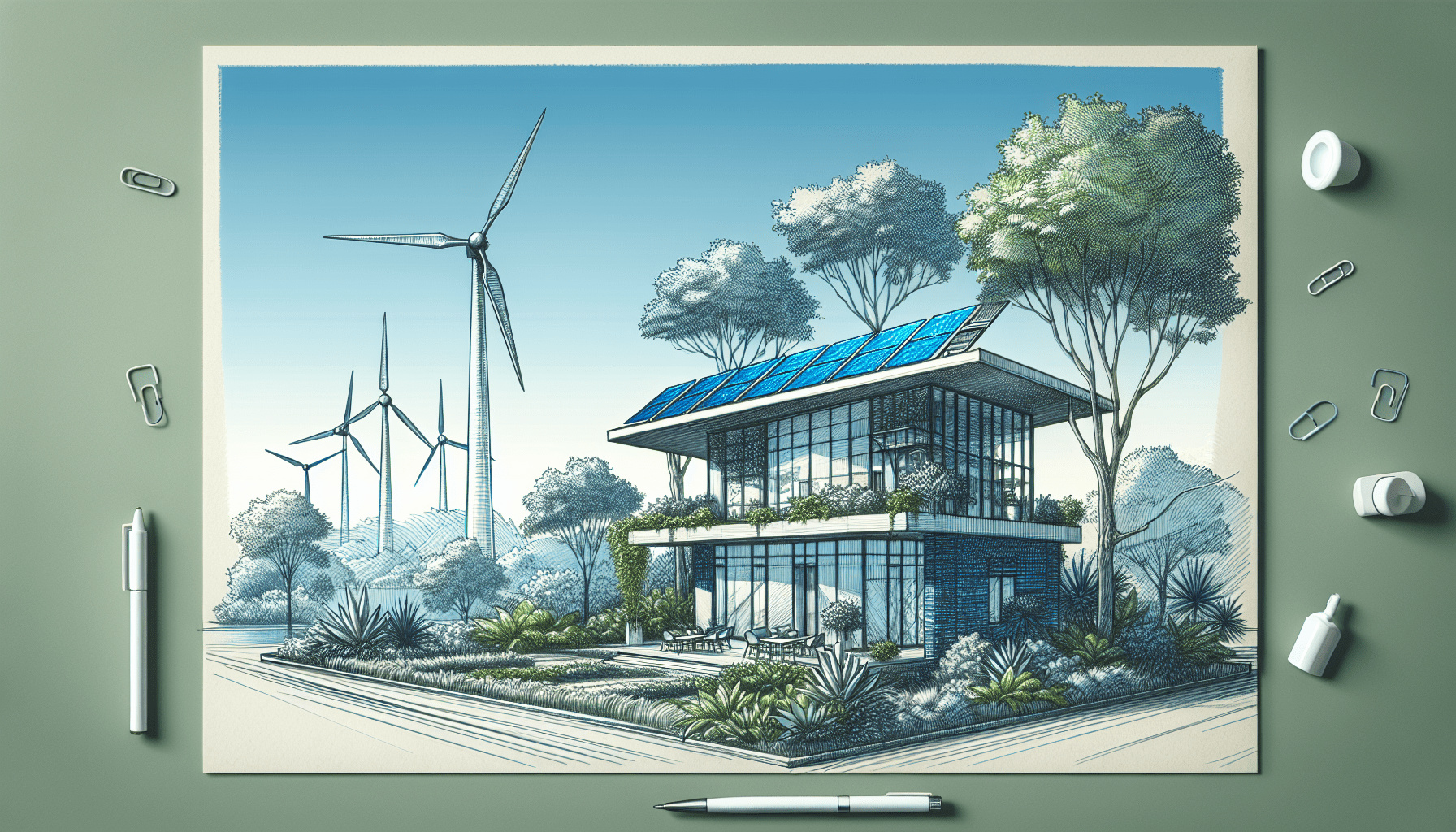In our journey towards a more sustainable future, integrating renewable energy systems into buildings is a pivotal step. Our article delves into practical strategies and cutting-edge technologies that enable us to create energy-efficient structures. We’ll explore solar panels, wind turbines, and geothermal systems, illustrating how these renewable sources can seamlessly fit into our architectural designs. By aligning our construction practices with green energy principles, we take concrete actions towards reducing our carbon footprint and fostering environmental responsibility. Have you ever wondered how we can create buildings that are not only kind to our wallets but also to our planet? Thought about how we might integrate renewable energy systems into sustainable buildings? Well, you’re in the right place because we’re about to dive deep into this exciting and essential topic. Sustainable buildings combined with renewable energy can play a significant role in reducing environmental impacts and promoting energy efficiency.

Understanding Sustainable Buildings
Let’s start by understanding what sustainable buildings are. These are structures designed to minimize their impact on the environment, making efficient use of resources like water and energy while providing healthier living or working spaces. The goal is to enhance the well-being of both the planet and the people using the building.
Characteristics of Sustainable Buildings
Sustainable buildings feature several key components:
- Energy Efficiency: They use less energy for heating, cooling, lighting, and electricity.
- Water Efficiency: They minimize water usage through efficient fixtures and systems.
- Materials: They use eco-friendly and sustainable building materials with low environmental impact.
- Indoor Environmental Quality: They provide good air quality, natural lighting, and thermal comfort.
- Sustainable Location: They are often situated in areas that reduce transportation impact, near public transit, and local facilities.
What Are Renewable Energy Systems?
Now that we know what sustainable buildings are, let’s explore what renewable energy systems entail. Renewable energy systems harness natural resources like sunlight, wind, and geothermal heat, converting them into usable energy. These systems are vital in reducing our reliance on fossil fuels and lowering greenhouse gas emissions.
Types of Renewable Energy Systems
Here are a few types of renewable energy systems that can be integrated into buildings:
- Solar Panels (Photovoltaic Systems): Convert sunlight directly into electricity.
- Solar Thermal Systems: Use sunlight to generate thermal energy for heating.
- Wind Turbines: Use wind energy to generate electricity.
- Geothermal Systems: Use the earth’s natural heat for heating and cooling.
- Biomass Systems: Convert organic materials into energy.

Integration of Renewable Energy Systems into Sustainable Buildings
Integrating renewable energy systems into buildings is more than just an installation; it’s about creating a synergy between the building’s design, location, and energy needs. Let’s look at the steps and considerations to effectively integrate these systems.
Initial Considerations
Before jumping into the integration, we need to consider several factors:
- Site Assessment:
- Geographical Location: Assess the availability of renewable resources (e.g., sunlight, wind).
- Building Orientation: Determine the building’s alignment for optimal energy capture.
- Roof Space and Structure: Evaluate the space and strength of the roof for installations like solar panels.
- Energy Demand Assessment:
- Conduct an analysis of the building’s energy requirements to match the appropriate renewable energy systems.
- Budget and Financial Incentives:
- Determine the budget and explore available incentives such as tax credits or grants.
Designing for Integration
Bringing renewable systems into the design from the start can significantly improve efficiency and reduce costs. Here’s how:
- Passive Design: Utilize passive design principles to reduce energy demand. This involves strategic orientation for natural lighting and ventilation, thermal mass to store heat, and shading devices to control temperature.
- Integrated Systems: Design integrated systems where renewable energy systems work together with traditional energy systems to optimize efficiency.
- Smart Technologies: Incorporate smart building technologies to monitor and manage energy use efficiently.
Solar Energy Systems
Solar energy is one of the most popular and versatile options for sustainable buildings. Let’s break down its components and integration:
Solar Photovoltaic (PV) Systems
These systems convert sunlight into electricity using solar cells. Here’s what to consider for integration:
- System Size: Match the size to the energy needs of the building.
- Placement: Install panels on rooftops, façades, or ground-mounted arrays for maximum sunlight exposure.
- Inverters: Use inverters to convert DC power generated by panels to AC power used in buildings.
Solar Thermal Systems
These systems are used for water heating, space heating, and even cooling. Key considerations include:
- Collectors: Choose between flat-plate collectors, evacuated tube collectors, or concentrated solar power systems.
- Storage: Incorporate storage systems like insulated water tanks.
- Integration: Combine with existing heating and cooling systems for hybrid solutions.
Wind Energy Systems
Wind turbines can be an effective way to generate electricity, especially in windy areas. Consider these points:
- Turbine Selection: Select turbines based on the average wind speed and energy needs.
- Placement: Ensure turbines are placed in open areas away from obstacles.
- Grid Connection: Integrate with the building’s power system and grid for consistency.
Geothermal Energy Systems
Geothermal systems provide a consistent and reliable source of energy for heating and cooling. Here’s a look at the integration process:
Ground Source Heat Pumps (GSHPs)
These pumps transfer heat between the ground and the building. Key steps for integration include:
- Loop System: Choose between horizontal, vertical, or pond/lake loop systems based on land availability.
- Heat Exchanger: Install an efficient heat exchanger to transfer thermal energy.
- Compatibility: Ensure compatibility with existing HVAC systems or design new systems accordingly.
Biomass Energy Systems
Biomass systems can use organic materials like wood, agricultural waste, or even dedicated energy crops to generate energy. Here’s how to integrate:
- Source Materials: Secure a reliable and sustainable source of biomass materials.
- Boilers and Stoves: Install biomass boilers or stoves for space heating and hot water.
- Storage: Ensure proper storage facilities for biomass materials to prevent degradation.
Implementation Strategies
Once we’ve chosen the renewable energy systems, the next step is practical implementation. Here are strategies to ensure successful integration:
Phased Implementation
Consider a phased approach where systems are integrated in stages. This can help distribute costs and manage resource allocation effectively.
- Phase 1: Begin with high-impact, low-cost measures such as improving insulation and installing energy-efficient lighting.
- Phase 2: Add solar PV panels or solar thermal systems based on initial energy savings.
- Phase 3: Integrate more complex systems like wind turbines and geothermal heat pumps as budget and resources allow.
Collaboration with Experts
Work with architects, engineers, and renewable energy specialists to design and implement systems that are efficient and compliant with regulations.
- Architects: To ensure aesthetics and design elements align with renewable systems.
- Engineers: For technical assessments and integration.
- Specialists: To optimize system performance and handle specific installations.
Ongoing Monitoring and Maintenance
Regular monitoring and maintenance are critical for the long-term performance of renewable energy systems.
- Monitoring: Use smart meters and building management systems (BMS) to track energy production and consumption.
- Maintenance: Schedule regular maintenance checks to ensure systems are operating efficiently and to address any issues promptly.

Financial Considerations
Implementing renewable energy systems can be a significant investment. However, there are ways to make this more financially feasible:
Upfront Costs
Understanding the initial costs helps in planning and budgeting. Here’s a summary:
| System Type | Estimated Upfront Cost (per unit) |
|---|---|
| Solar PV System | $10,000 – $20,000 |
| Solar Thermal System | $2,000 – $5,000 |
| Wind Turbine | $30,000 – $50,000 |
| Geothermal System | $20,000 – $30,000 |
| Biomass System | $5,000 – $15,000 |
Financial Incentives
Numerous financial incentives are available to reduce costs:
- Tax Credits: Federal or state tax credits for renewable energy installations.
- Grants: Government grants for sustainable building projects.
- Loans and Financing: Special loans or financing options for green building upgrades.
Long-Term Savings
Investing in renewable energy can lead to significant long-term savings through reduced energy bills. For example:
- Solar PV Systems: Can reduce electricity bills by 70-100%.
- Geothermal Systems: Can save up to 60% on heating and cooling costs.
- Wind Turbines: Can cut electricity bills by 50-90%.
Case Studies and Real-World Examples
Looking at successful examples can provide concrete insights into the benefits and challenges of integrating renewable energy systems.
Case Study 1: Residential Solar Integration
Location: California, USA
Project: Single-family home
Systems Used: Solar PV, solar thermal
Details:
- Installed a 5kW solar PV system and a solar thermal system for water heating.
- Utilized passive solar design techniques for natural lighting and temperature control.
- Reduced annual electricity bills by 90% and achieved near-zero net energy consumption.
Case Study 2: Commercial Wind Energy Integration
Location: Texas, USA
Project: Office building
Systems Used: Wind turbines, solar PV
Details:
- Installed two small-scale wind turbines producing 15kW each.
- Complemented with a 20kW solar PV system.
- Achieved energy self-sufficiency and reduced operational costs significantly.
Case Study 3: Geothermal System in an Educational Institution
Location: Ontario, Canada
Project: University campus
Systems Used: Geothermal heat pump, solar PV
Details:
- Integrated a geothermal system for heating and cooling several buildings on campus.
- Added solar PV panels to supplement electricity needs.
- Saved 50% on energy costs and reduced carbon footprint by 75%.

Challenges and Solutions
Integrating renewable energy systems isn’t without its challenges. Here’s how to navigate them:
Initial Cost
Challenge: High upfront costs can be daunting.
- Solution: Utilize financial incentives, phased implementation, and explore third-party financing options.
Technical Complexity
Challenge: Integration can be technically challenging.
- Solution: Collaborate with experts, use integrated design approaches, and adopt smart technologies for easier management.
Regulatory Hurdles
Challenge: Navigating regulations and obtaining permits can be time-consuming.
- Solution: Stay informed about local regulations, work with experienced professionals, and start the permit process early.
Space Constraints
Challenge: Limited space for installations, especially in urban areas.
- Solution: Use innovative solutions like building-integrated photovoltaics (BIPV) or shared community systems.
The Future of Sustainable Buildings and Renewable Energy
As technology advances, we can look forward to even more efficient and cost-effective renewable energy solutions. Here are some emerging trends:
Smart Grids
Smart grids enable better integration of renewable energy sources, ensuring stable and efficient energy distribution.
Energy Storage
Advancements in energy storage technologies, like batteries, will allow for more reliable use of renewable energy sources.
Green Building Certifications
Obtaining certifications like LEED (Leadership in Energy and Environmental Design) can validate the sustainability of buildings and potentially increase property value.
Community Energy Projects
Pooling resources for community projects can provide access to renewable energy for everyone, particularly in dense urban settings.

Conclusion
Integrating renewable energy systems into sustainable buildings is challenging but incredibly rewarding. It requires careful planning, collaboration, and a commitment to long-term sustainability. By understanding and applying the principles and steps outlined in this article, we can create buildings that not only serve us better but also protect our planet for future generations.
So, the next time you hear about sustainable buildings and renewable energy, you’ll know that it’s more than just a trend – it’s a vital part of our journey towards a greener and more sustainable world. Let’s embrace it for a brighter, cleaner future!



